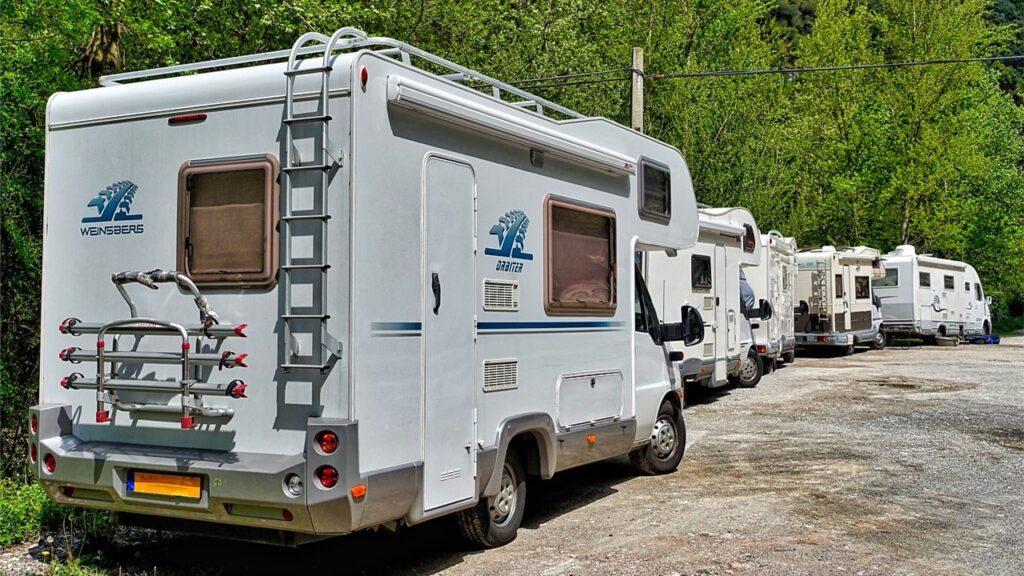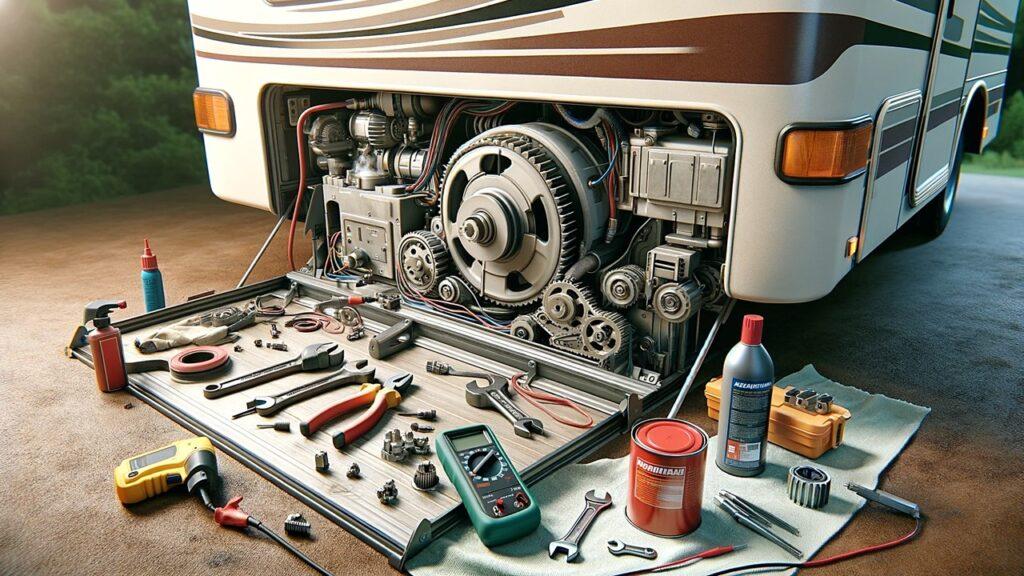
Air conditioning noise can really disrupt your RV adventures. Understanding the common sources of noise in RV air conditioning systems is essential. Typically, these noises come from mechanical vibrations, loose components, or inadequate insulation. Fans and compressors are often culprits, generating vibrations that resonate through the RV. Ductwork design can also amplify noise, creating a less-than-pleasant environment. Reducing this noise can greatly enhance your RV experience, making it more relaxing and enjoyable. A quieter RV allows you to better appreciate the serenity of nature, have conversations without shouting, and sleep soundly. By implementing effective noise reduction techniques for quieter RV air conditioning systems, you can transform your RV into a peaceful retreat.
Essential Factors Contributing to RV Air Conditioning Noise
Ever wondered why your RV air conditioning system seems noisier than it should be? Let’s dive into the essential factors that crank up the volume and disturb the peace. Understanding these can help you turn down the dial on noise and turn up the comfort on your RV travels.
Mechanical Vibrations and Their Impact
The hum and rattle from your RV’s air conditioner mostly stem from mechanical vibrations. These vibrations are primarily produced by the compressor and fan units, which are the heart and lungs of your AC system. When these components are not securely mounted, they can shake, leading to an orchestra of unwanted noise. Additionally, loose components like screws or brackets can exacerbate this vibration, turning minor hums into major annoyances.
The Role of Ductwork in Noise Amplification
Moving to the veins of your AC system—the ductwork. The way ducts are designed and installed can significantly affect the sound levels in your RV. Poorly secured ducts can lead to noise amplification throughout your space. To combat this, start by identifying any loose fittings or sections where the duct might be hitting other parts of your RV. Tightening these can drastically reduce noise levels.
Insulation Deficiencies and Noise Penetration
Insulation plays a crucial role in muffling the sounds of your RV air conditioning system. Inadequate insulation not only lets the noise out but can also allow external sounds in, disturbing your peaceful retreat. Upgrading the insulation around your AC unit and in the walls can be a game-changer for maintaining tranquility.
After covering these key areas, you’ll be well on your way to reducing noise from your RV air conditioning system. So, before you hit the road for your next adventure, consider a quick inspection and update of these components to enjoy a quieter ride.
Key Techniques to Reduce Noise in RV Air Conditioning Systems
If you’re aiming for a serene journey in your RV, focusing on reducing air conditioning noise is a smart move. Here’s how you can achieve a quieter atmosphere, making your RV a perfect oasis of calm.
Choosing the Right Air Conditioning Unit for Quiet Operation
Selecting the right air conditioning unit can make a significant difference. Look for models specifically designed for low noise output. Many modern RV air conditioners are engineered to be quieter, so comparing the decibel levels between models can help you make an informed decision. This is especially important if you’re upgrading or replacing an older unit.
Enhancing Insulation Around the AC Unit
Next up, let’s talk about beefing up the insulation. This is a practical step that you can take yourself. Start by sealing gaps and adding soundproofing materials around your AC unit. Materials like foam insulation panels or sound-dampening curtains can be very effective.
Installing Vibration Isolators on AC Components
Another technique is to install vibration isolators. These handy devices can significantly reduce the amount of noise transmitted through the structure of your RV. They work by absorbing the vibrations before they can spread, thus muting the ruckus your AC might otherwise cause.
Regular Maintenance Practices for a Quieter AC
Lastly, don’t overlook regular maintenance. Ensuring your air conditioning system is well-maintained is crucial. This includes cleaning filters, checking for loose parts, and ensuring the system is correctly charged with refrigerant. These simple steps not only keep your AC running efficiently but also quieter.
By adopting these noise reduction techniques for RV quiet air conditioning systems, you’re not just enhancing your comfort but also ensuring that every journey is as enjoyable as the destination. Before you know it, you’ll be soaking up the silence and wondering why you didn’t tackle these tweaks sooner.
Step-by-Step Guide to Retrofitting Your RV Air Conditioner for Less Noise
Tired of the constant hum and rattle from your RV air conditioner? Good news: you can fix that! Here’s a detailed, easy-to-follow guide to help you retrofit your RV air conditioner and enjoy a much quieter ride.
Step 1: Assess Your Current RV Air Conditioning Setup
Start by taking a good look at your current setup. Listen closely and figure out where the noise is coming from. Is it the compressor, the fans, or maybe the ductwork? Identify any loose components and check for poorly insulated areas. This initial step helps you pinpoint the exact spots that need attention.
Step 2: Secure Loose Components
Next, grab a screwdriver and tighten any loose screws, bolts, or fasteners. Sometimes, the noise is simply because things have shaken loose over time. Securing these components can make a big difference. Use thread-locking compounds for screws that tend to loosen frequently.
Step 3: Enhance Insulation Around the AC Unit
Insulation is your best friend when it comes to reducing noise. Use soundproofing materials like foam panels or mass-loaded vinyl around your AC unit. Make sure to cover all gaps and ensure the insulation is snug. This step not only helps in reducing noise from your RV air conditioning system but also improves your unit’s efficiency.
Step 4: Install Vibration Isolators
Vibration isolators are amazing at dampening the noise from your AC unit. Install these on the compressor and fan units, and on any mounting brackets. They absorb and minimize the vibrations, significantly reducing the noise that travels through your RV’s structure.
Step 5: Regular Maintenance and Upkeep
Don’t forget regular maintenance. Clean your AC filters often to keep the air flowing smoothly and prevent the unit from overworking. Check for worn-out parts and replace them as needed. Regular upkeep keeps your AC running quietly and extends its lifespan.
Step 6: Upgrade to a Quieter Model
If your AC unit is old and noisy, consider upgrading to a newer, quieter model. Look for air conditioners designed with noise reduction in mind. Compare the decibel ratings and choose the quietest option available. This might be one of the most effective ways to ensure a peaceful RV environment.
Step 7: Fine-Tuning and Testing
After making all these modifications, it’s time to test your AC. Turn it on and listen closely. If there’s still some noise, adjust the insulation or isolators as needed. Regularly check and fine-tune to keep the noise levels down.
By following these steps, you can master noise reduction techniques for quieter RV air conditioning systems. Whether you’re parked at a campground or on the move, these adjustments will help you enjoy a quieter and more comfortable RV experience.
Wrapping It Up!
Reducing noise in your RV air conditioning system is more than just a comfort issue; it’s about enhancing your overall RV experience. A noisy AC can be incredibly disruptive, making it hard to relax, converse, or even sleep. Implementing effective noise reduction techniques for quieter RV air conditioning systems ensures that your travels are peaceful and enjoyable.
By addressing mechanical vibrations, improving insulation, securing loose components, and considering an upgrade to a quieter model, you can significantly reduce the noise levels of your RV’s AC unit. Each of these steps, though simple, can have a profound impact on the quality of your RV living experience. You’ll no longer have to compete with the constant hum of your air conditioner, allowing you to better appreciate the tranquility of nature and the joy of the open road.
Moreover, these noise reduction techniques not only improve comfort but also enhance the efficiency and longevity of your air conditioning system. Regular maintenance and thoughtful upgrades ensure that your unit operates smoothly and quietly, reducing the likelihood of costly repairs down the line.
Tackling the noise from your RV air conditioning system should be a priority for anyone looking to improve their RV lifestyle. Whether you’re parked at a scenic campground or cruising along the highway, a quieter AC makes for a more pleasant and stress-free journey. Implement these techniques and transform your RV into the peaceful haven you’ve always dreamed of.
Related FAQs
Why is my RV air conditioner so loud?
The noise often comes from mechanical vibrations, loose components, or inadequate insulation.
How can I tell if my AC ductwork is causing noise?
Check for loose fittings or sections where the duct might be hitting other parts of your RV.
What materials are optimal for soundproofing my RV AC?
Foam panels and mass-loaded vinyl are excellent for enhancing insulation and reducing noise.
How often should I maintain my RV air conditioner to keep it quiet?
Regular maintenance, including cleaning filters and checking for wear, should be done at least twice a year.
Is it worth upgrading to a newer, quieter AC model?
Yes, modern units are designed to be quieter and more efficient, making them a worthwhile investment.
As outdoor enthusiasts ourselves, we understand the significance of reliable gear that can withstand the elements and support you throughout your journey. We try to provide as much real life information with our guides and how tos to the readers as possible. Our honest and transparent reviews of essential outdoor gadgets and products are rooted in testing and experience. We take great satisfaction in offering unbiased evaluations, ensuring that you can make informed decisions when investing in outdoor gear. As an affiliate website, we may earn a small commission from some of the products we feature. However, rest assured that our opinions are not influenced by this, and your trust is always our top priority.



